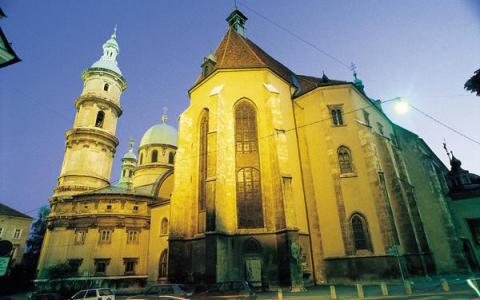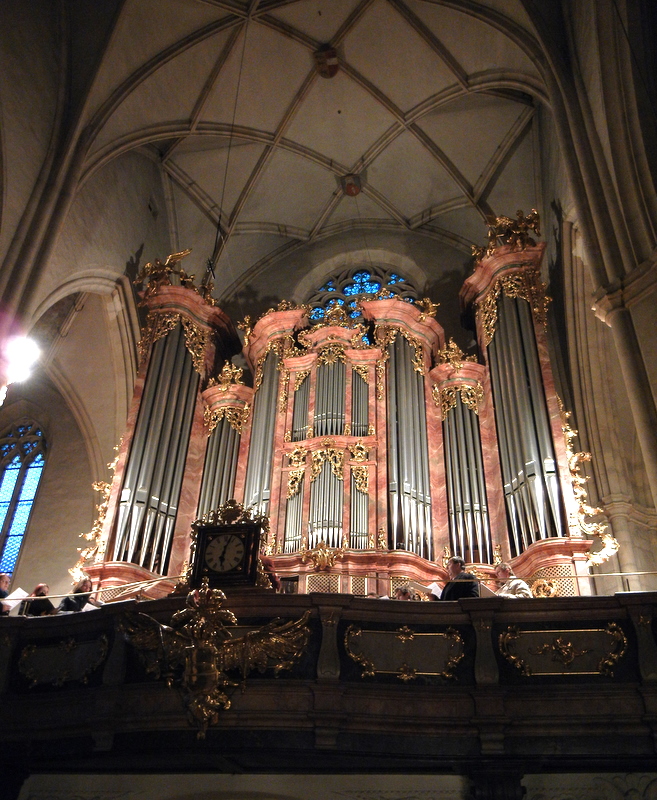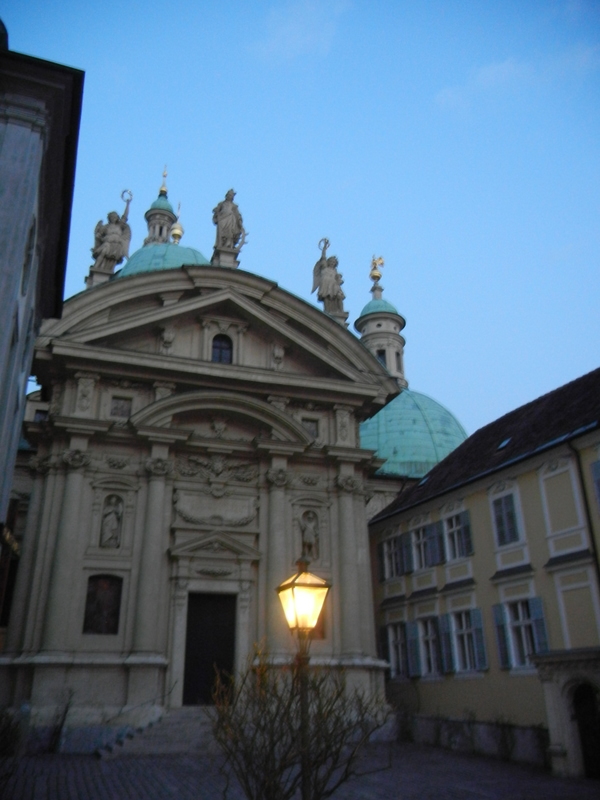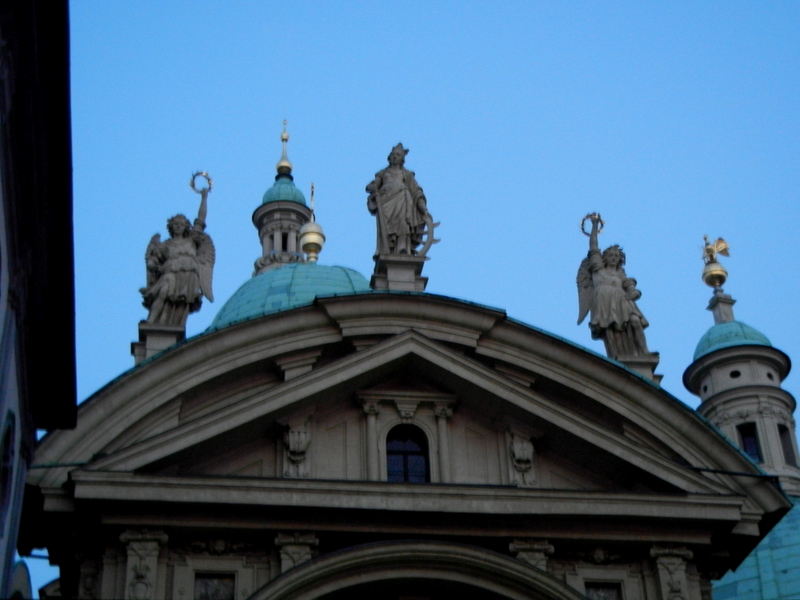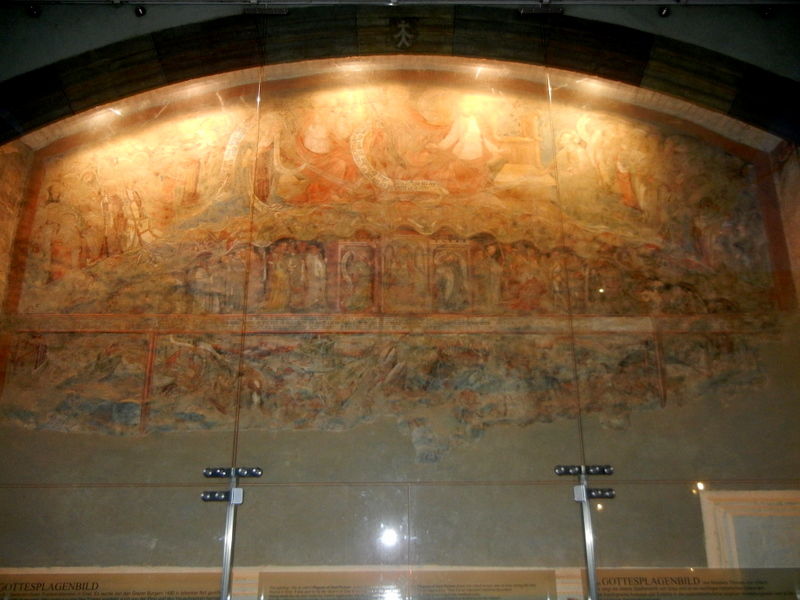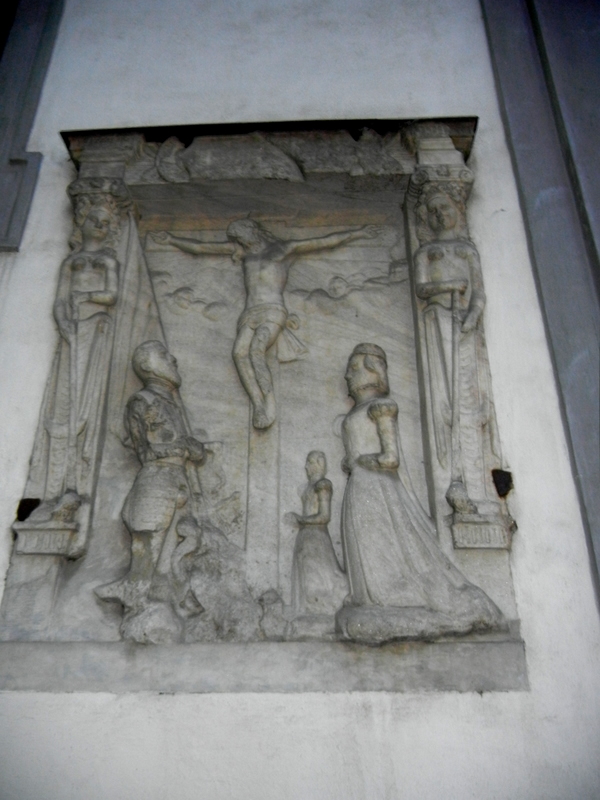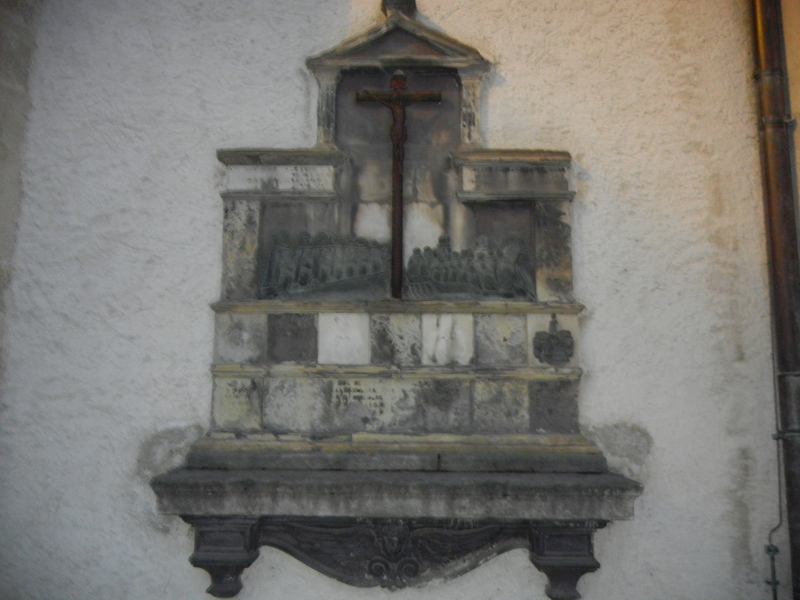Ethereal. That’s the only way to describe a cappella music sung in an ancient cathedral.
Ash Wednesday dawned bright and beautiful, although a little cool. Nearly every Roman Catholic church in Graz offered an Ash Wednesday service but none of the Protestant (Evangelische Kirche) churches did. We decided to attend the one offered in the Dom, the Cathedral in Graz, which seemed to feature a lot of music as well as the High Mass officiated by the bishop. The Dom came into view as we passed by the entrance to the oldest part of the city, the Innere Stadt.
It was hard to get photos of the Cathedral in the fading light so I am using a few from the Graz Tourism office, as well as my own.
The cathedral complex is really the main church which you can see here and a whole host of other buildings–the Mausoleum where Emperor Ferdinand II is laid to rest, a seminary (not sure if it is still used!) and side chapels.
The Cathedral was designed in late Gothic style in the 15th Century, and built under Frederick III. It became the Court Church of the Holy Roman Emperor in 1786 when Graz was raised to the rank of a Cathedral and got its own Bishop.
Based on our experience in Munich on Christmas Eve at the Cathedral, when the church was packed, we arrived quite early, not knowing exactly how many people would be there. Turns out it was just us, a few others and the choir, which was rehearsing. Since I don’t make it a practice to record or photograph during worship, I was able to get some photos of the inside and outside of the church beforehand, as well as a video of a part of one of the songs being sung.
This is especially for my organist friends, Alice, Jeff, and Nita. Information about the organ:
“The present cathedral organ was built in 1978 by the Klais organ factory built. It is built on the 1687 Baroque west gallery. The cathedral organ has four manuals with original 70 registers in mechanical and electrical stop action; in 1998, a trumpet work with three registers were additionally installed. On summer Sundays there are regular organ recitals.” (from the church website)
What do you think, guys?
Most churches like this don’t turn lights on until just before the service begins (and I think the same goes for heat, if any, which I doubt! Can you imagine the cost to heat this huge space?) So, no photos of the inside of the church, but for a view look here:
http://www.3dpanorama.at/gallery/dom_graz_panorama/dom_graz.htm
You can see the Gothic elements and then all the high baroque elements of this church.
The outside of the church was a little more accessible.
You can take tours of the Mausoleum which includes a trip up into the tower. We will do this eventually!
Originally, the cathedral originally had painted facades but these are now largely white, with some remnants of frescoes. Best known is “God’s plagues picture” on the south side of the nave (attributed to the painter Thomas from Villach) which refers to the year 1480, when Graz befell three plagues: plague, war and locusts.
There were some other interesting features in the outside walls, worth looking into at a later date.
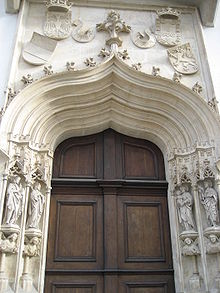
The West Portal of the Cathedral--still Gothic with beautiful carvings. No one uses this door! - my shot of this was a little out of focus due to fading light or perhaps just poor photography, so thank you once again, Graz Tourist Bureau!
And now here is the video of the choir singing part of the Miserere Mei by Rihards Dubra.
The text, from Psalm 51, which is traditionally read, sung or recited on Ash Wednesday. Sorry for the talking of other people towards the end; even the Domkapellmeister was perturbed. He uttered a loud ‘shhhh!’ at one point.
Miserere mei, Deus, qui dixit:
nolo mortem peccatoris,
sed ut convertatur et vivat
Miserere Mei, Deus.
(English translation of the Latin)
Have mercy on me, O God, who said:
I do not want death of the sinner,
but to be converted, and live
Have mercy on me, O God.
The church service was beautiful with lots of singing. References to the scripture passages for Ash Wednesday were familiar and we could at least sing all the songs, since there was actually an order of worship provided, which included all the words.
Our next night’s musical experience was completely different! More on that, to come!

